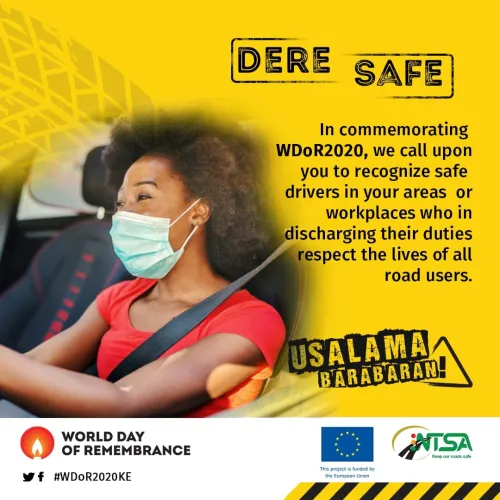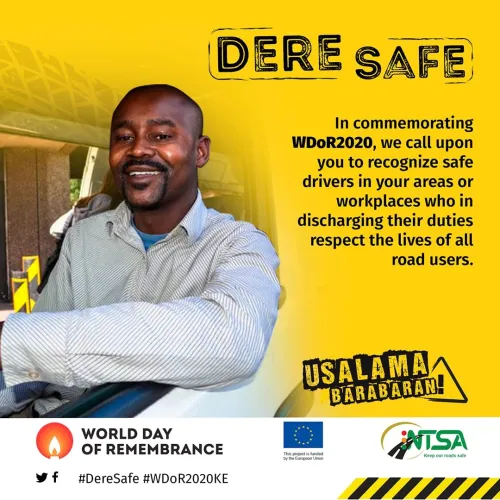Home » Road safety CUK
Road safety CUK
- Must hold a valid driving license for the vehicle being driven
- Understand and obey all the rules of the road
- Update regularly on road safety
- Individual responsibility for driving behavior
- Must assess self-fitness to drive
- Never drink and drive
- Never drive under the influence of drugs
- Never drive when tired
- Must wear a seat belt on every journey

- Always pre-check before using a vehicle.
- Daily pre-check of the vehicle and a more detailed check weekly or as prescribed by the employer
- Make sure loads are securely stowed or fastened in the vehicle to prevent any movement during transit.

- Always plan your route
- Check for weather and traffic updates
- Always drive at the appropriate speed for the prevailing conditions
- Always use daytime running lights and slow down or even cancel your journey in severe weather conditions [rain, fog, high winds, ice, or snow].

- The first consideration is personal safety and that of any passengers
- Use hazard warning lights to ensure the visibility of your vehicle by other road users
- Collisions should be reported as appropriate
- Details should be recorded on a preliminary incident report form

- Driver Training – undergo regular refresher training
- Driver Qualification and Authorization – should be authorized to drive with a valid driving license for the category of vehicle
- Knowledge of rules of the road – must have a satisfactory knowledge of the rules of the road and regularly update self on road safety rules
- Fitness to Drive – should report to work fit for all work activities including driving duties
- Fatigue – do not continue to drive if you are suffering from fatigue
- Measures to tackle driver fatigue – rest well, stop if you feel tired, discuss concerns with your manager, reduce journeys, avoid dangerous times, and reduce driving time.
- Medical Conditions – you should inform the relevant driver licensing authorities of any medical condition that may affect your ability to drive safely
- Eyesight – You should have your eyes tested regularly
- Alcohol and Drugs – avoid drinking alcohol in the hours before driving
- Medicines and driving – Check with your doctor or pharmacist whether any over-the-counter or prescribed medicines you are taking are likely to affect your driving. Also always check the label on medicines and the patient information leaflet for any warnings
- Illicit drugs – cause slower reaction times, aggressive behavior, poor concentration, panic attacks, paranoia, and fatigue
- Daily Stress Events – you should stress events to minimize their impact on your driving
- Personal safety – ensure your vehicle is well-maintained and regularly-serviced, join a reliable breakdown organization, take a mobile phone with you for emergencies, keep valuables out of sight and reach, and keep the car doors closed
- Safe parking – do not park in isolated places, lock all doors and make sure that others can see you
- Dealing with Potentially Aggressive behavior – avoid conflict with other drivers, do not overreact or panic, do not get out of the car to deal with an aggressive driver, do not make gestures, if your mood is affected, find an opportunity to take time out
- Who is responsible for the vehicle? – as a driver, you are responsible for ensuring that the vehicle you are driving is safe to use on the road and meets all legal requirements regardless of ownership
- Using your own vehicle – you are responsible for your vehicle’s roadworthiness, taxes, and insurance
- Pre-drive vehicle checks – check both the exterior and interior of the vehicle before driving
- Vehicle cleanliness – ensure the vehicle is free from the clutter that could distract visibility or lose items that could interfere with driving
- Tires – maintain manufacturer’s recommended pressures on your tires and check spare tire from time to time
- Safety Equipment – carry a warning triangle, first aid kit, torch, and high visibility jacket for use in emergencies or breakdowns
- Seating position and safety – adapt a good seating posture where you can comfortably reach all the controls
- Seat belts – driver and all passengers should wear seat belts
- Child restraints – for those who carry children as passengers, they should ensure that they are properly restrained in the vehicle to avoid unnecessary injury
- Securing Loads – do not drive a vehicle that is overloaded, carry the only legal load, and ensure the load is well stowed for safety
- Driver considerations – ensure you are fit to drive
- Give yourself time – plan your journey well
- Pre Journey Checks – assess driver, vehicle, and the journey
- Safe speed – Always drive within the legal speed limit for the type of vehicle you are driving
- Impact of your speed on pedestrians – The risk of death to pedestrians varies enormously depending on the impact speed
- Distractions – ensure full concentration without distractions
- Mobile phones – mobile phone while driving is a significant distraction that greatly increases the risk of collision
- In-vehicle navigation systems – navigation devices can cause distraction and do not follow them when they give a direction that violates traffic laws
- Other distractions – eating, drinking, smoking, handling other equipment
- Safe Driving Practices – you should drive smoothly
- Driving at night – switch on your lights, lower speed, do not blind oncoming vehicles with your headlights
- Weather conditions and seasonal hazards – adjust your driving accordingly
- Is your vehicle weather ready? – ensure your vehicle is well maintained to lower the risk of problems in extreme weather
- Rain – use dipped headlights, make sure vents are working correctly, use windscreen wiper as appropriate, and drive smoothly
- Driving in Fog – slow down, switch off distracting noises, switch on fog lamps, do not follow other vehicles blindly
- Hot weather – take regular breaks to stretch your legs and remember other drivers will have similar problems
- Collisions – stop, switch off the engine, use hazard warning lights, place hazard warning triangle, do not move passengers unless in immediate danger, call for emergency services, give first aid, record and report the collision
- Breakdowns – move the vehicle on the side of the road and switch on hazard warning lights, move passengers to a safe location, call emergency services or breakdown organization
Why is road safety awareness important?
It is very important to be aware that road traffic injuries remain an important public health problem. When road safety products are utilized correctly or efficiently, they can help save lives, prevent accidents and injuries, and keep society functioning most optimally.
Road safety is something important that has to be followed at all times to ensure the safety of the operators of a vehicle, passengers, and pedestrians. In fact, road traffic injuries are the leading cause of death among people aged between 15 and 29 years. Traffic rules and guidelines have to be set in place and strictly followed so that serious accidents and injuries can be averted.
The measures and methods taken to establish road safety include the use of various road safety products. Well-designed and uniquely engineered road safety products ensure the constant safety of vehicles and pedestrians.
PHOTOS TAKEN DURING ROAD SAFETY AWARENESS CAMPAIGN WITH THE BODABODA RIDERS AT CUK GATE
Featured News

CUK Hosts a Capacity Building Workshop for the I-TVET Staff

CUK Hosts India’s NEDAC Delegation

